Making your FT1000MP radio better
A fix for the known CFL inverter problem on FT1000MP series transceiversmakarov.ca
Solution for Yaesu FT1000MP Mark V Field display problem
A simple fix for the famous FT1000MP display low brightness and light up delay problem.
Many of Yaesu FT1000MP series transceivers including MarkV and MarkV Field models have a common confirmed problem with the display backlight. The problem was reported on multiple forums by owners of all these models. What happens is when the radio is turned on, the display does not always come on. It sometime takes time for it to light up. This time can be anywhere from a few seconds to a minute or more. It was also reported that either the repair shops or manufacturer were not able to deal with the problem. Furthermore, many of the owners have been complaining that the display brightness is low, even if the brightness menu is set to High.
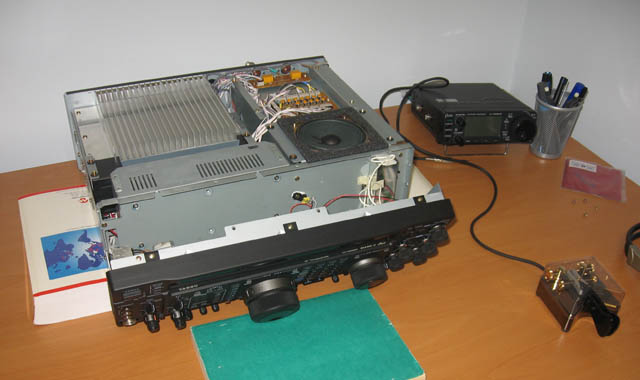
Fig. 1. On MarkV Field the CFL inverter is located on the right side of the front chassis. Note the long bunched wires connecting it to the CFL lamp on the front panel.
I also had this problem with my MarkV Field, and tried to deal with it by reducing the low side ballast resistor value, biasing the switching transistors, and even using a completely new inverter of a different brand. Nothing helped. It seemed the brute force attack approach did not work. So I took time to read available materials on the inverter design. After gaining some knowledge and doing analysis it occurred to me that the most likely reason for a low power CFL inverter to behave like that would be an unwanted capacitance on the high side, represented in the picture below by capacitors marked C'.
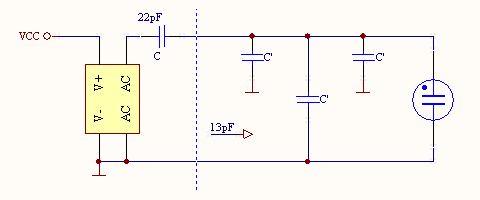
Here C is the inverter current limiting capacitor needed by design, and C' represent parasitic capacitance between the high voltage wires and the ground. The value of the total capacitance (to the right of the dashed line) measured with my N2PK VNA was 15pF. If to drop roughly a couple of pF belonging to the lamp itself, I was getting 13pF of the capacitance on the high voltage side of the CFL inverter, and that would include the wire parasitic capacitance and capacitance along the lamp to the grounded reflector. I also measured the inverter working frequency which was 48kHz. The following equivalent diagram depicts the capacitance values for C and C' converted to reactance at 48kHz. Z1 represents impedance of the current limiting capacitor C, and Z2 - impedance of the parasitics C'. Lets analyze what we've got here.
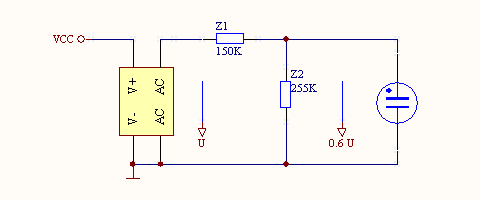
Measuring the high side voltage on CFL inverters is not a trivial task, because a high impedance and very low input capacitance high voltage voltmeter is needed in order to not to shunt the inverter. Because such instrument was not available, assumptions had been made based on the lamp size and average values recorded in the literature for this kind of CFL lamps and inverters. It was assumed that at power on the inverter develops 1200...1500V of strike voltage to ignite the lamp and as current through the lamp increases, the voltage would drop to nominal of 600...800V.
Providing the impedance of the 22pF current limiting capacitor (it is part of the inverter design) at 48kHz is 150K (Z1 in the above diagram), under ideal conditions with C'=0 the nominal current through the lamp would become 600V/150K=4mA, which is a good match to the actual number from the CFL lamps datasheets. Now, lets consider Z2 which is the parasitic capacitance impedance. Because it is connected in parallel with the high voltage wires, it can be seen right away that it creates a voltage divider with Z1, and their values are comparable - the 13pF at 48kHz become 255K. Under this condition, only 0.6 of the inverter voltage U reaches the lamp.
The above analysis is approximate and in reality the proportion in Z1 and Z2 values may differ, though it definitely causes loss of efficiency. The analysis would generally apply to both the initial strike and steady state modes, and explain first why the inverter is having hard time trying to ignite the lamp, and second why the brightness is low once the lamp gets ignited.
To verify the idea the inverter was removed from the housing, relocated close to the lamp as shown in the picture below, and the high voltage wires shortened. I removed 10 inches of wire from each side, 20 inches in total. That is a lot if you think in terms of parasitic capacitance. Because the housing did not fit the new location in any way, I left it out and let the inverter sit tightly to the right of the Display unit. The not shielded inverter did not seem to produce any noticeable RFI (in fact RFI from the inverter should drop because a length of radiating wire was removed), but for safety reason I am planning to make another housing for it and ground it.
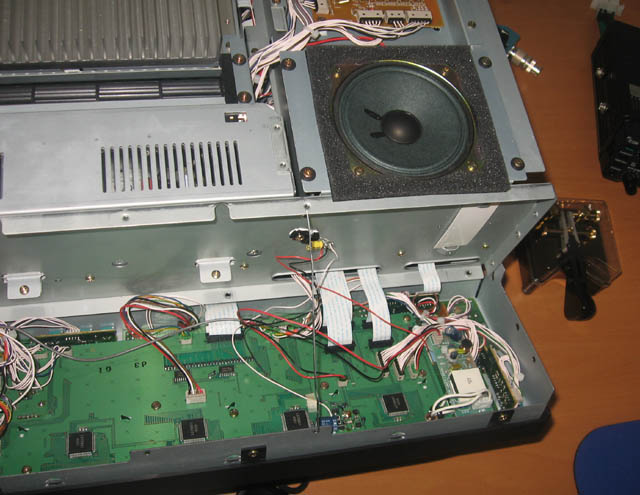
Fig. 2. New location of the CFL inverter board on MarkV Field to the right of the display unit. It is now connected to the CFL lamp with very short wires.
When connecting the inverter at its new location, make sure it is done as in the following picture - the right end of the lamp should connect to the left connector pin on the inverter board.
WARNING: Exersize caution working with the inverter. It develops high voltage (>1000V) when powered on. Before you touch it, double check the power is off.
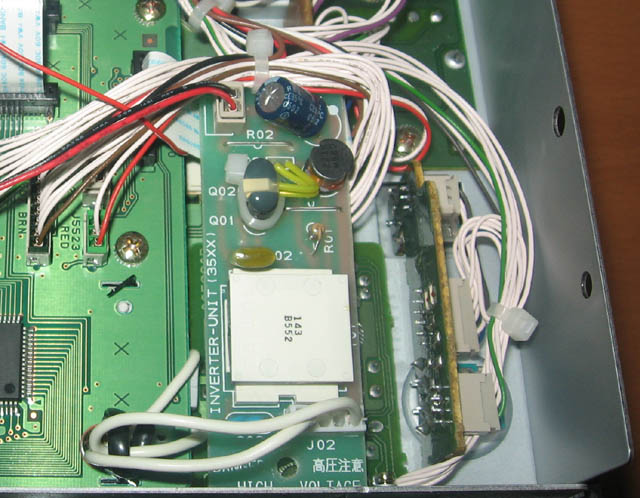
Fig.3. A close-up of the CFL inverter after the fix. Note the CFL lamp end closer to the picture center must connect to the left contact on the inverter board.
My MarkV Field's display lights up right away ever since, and display brightness is good with the menu brightness setting set to Low. Because FT1000MP, MarkV and MarkV Field all have this display problem, I would expect this fix to work for all of them, though existing location of the inverters may differ. Good luck with applying this fix to your nice FT1000MP!
Contact:  miv@makarov.ca
miv@makarov.ca